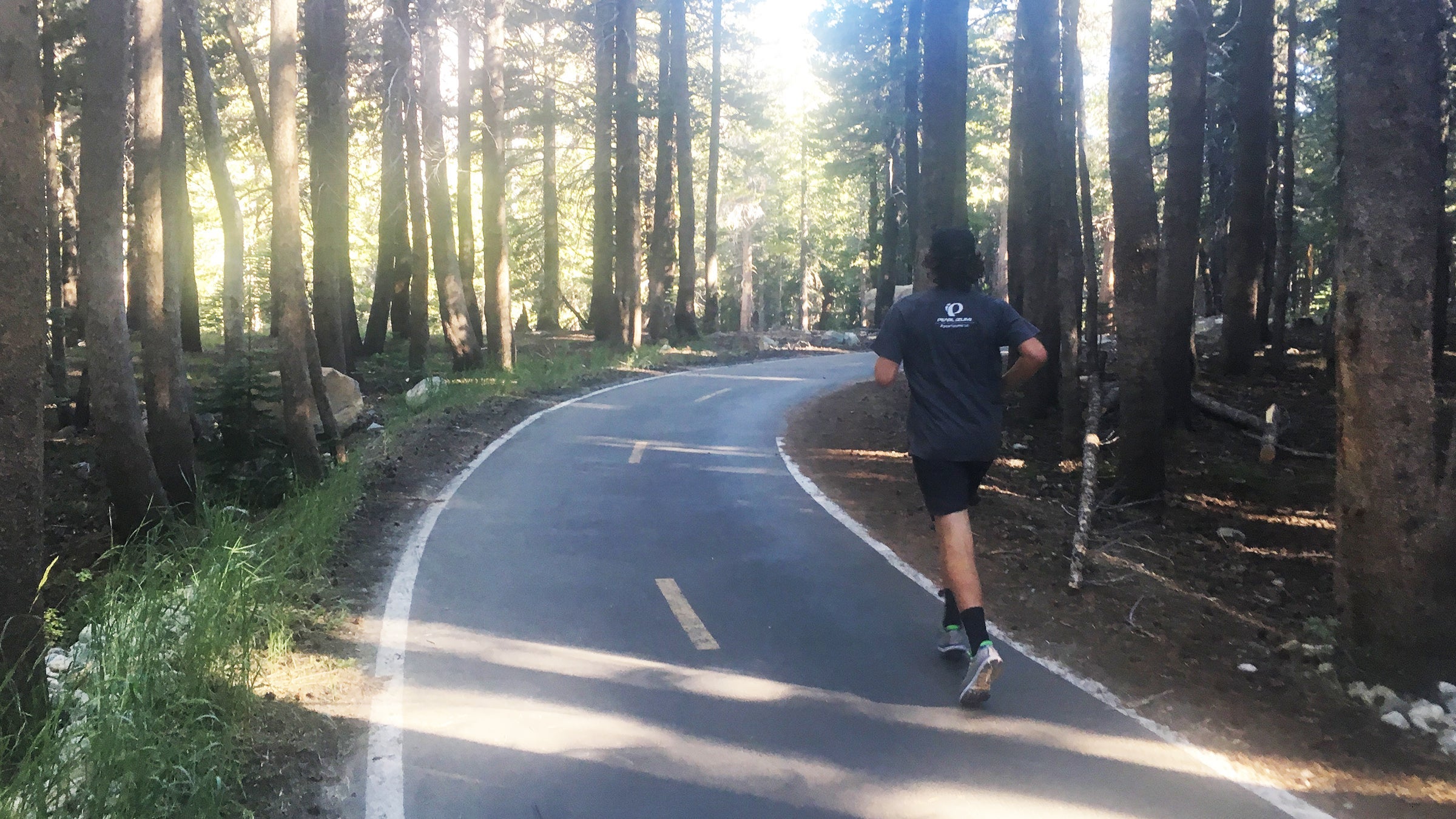A month ago, I decided I was tired of waiting for races to resume and I needed to embrace time trials to serve as much-needed goals and provide affirmation of progress. Since then, I’ve raced three 5K time trials and am beginning to learn a bit about their unique challenges.
The hardest thing, from my perspective, is taking the solo “race” seriously enough to suffer. To race well requires committing to a level of sustained effort beyond what the body and mind accepts as normal and wise. You have to convince yourself that the goal is meaningful enough to suspend the normal governors. You voluntarily embrace gasping breaths, searing lungs, pounding heart, straining muscles, and mental sirens of distress — for a symbolic number and the satisfaction of knowing that you can override those physical barriers, that you are in control.
While some runners, I’m told, thrive on the relaxed nature of the time trial, where you can play with how fast you can go without pressure that you have to do it today, I am not one of them. My mind is all too happy to bail at every sign of difficulty. I can talk myself completely out of the time trial attempt when I’m feeling sluggish and stiff during my warm up. I can convince myself this isn’t the day when, somewhere past the half mile, I encounter that inevitable moment of panic that says this is way too hard, way too soon and I’ll never make it. During those long minutes that come past halfway but not close enough to smell the finish, I can easily convince myself that the race isn’t important to me and I need to slow down for self-preservation.
All these emotions are also true on a normal race day. But on a normal race day I’ve already registered, gotten myself out of bed and to the location, pinned on a number, warmed up, and taken my place among other runners at the start. During a normal race day I’m passing fading runners, being passed by those who have paced better, and trying to catch or not be caught by rivals. My performance is public, both at the moment — on the streets amid the field of runners — and in the results that will be compiled and posted.
In the end, I race for the same reason — to accomplish a goal and prove to myself that I can — but I have myriad other cues to tell me that this is the day it has to happen, and smaller motivators to get past the hard patches. The need then, absent “real” races, is to create enough context around my time trial attempts that they have similar cues and motivators to get me to the point where I’m all in, focused and committed to making it happen.
Here are a few strategies I’ve found for getting there.

1) Train specifically.
Choose a distance, set a date and lay out a training plan specifically aimed at maximizing your success in that race. While much of distance training is similar regardless of your goal race, each distance emphasizes some facets of fitness more. During the 8–12 weeks of your training period, dedicate one to two workouts a week to workouts toward honing those race-specific strengths and skills, be that long tempos for a half marathon or V02Max intervals for the 5K.
Specific training has several benefits: You are, obviously, preparing your aerobic and muscular systems for the specific demands of this race. You are also giving your mind the chance to experience the specific type of discomfort unique to that race and practice in recognizing and accepting it as normal. And, you are investing time and energy toward this goal — time and energy that would be wasted if you don’t actual do it, or don’t commit to doing your best when you attempt the goal.
2) Taper.
Cut back on your training stress in the days before your time trial. This strategy, tapering, also accomplishes several things. First, you show up for the trial physically rested and ready to run hard. Given that, you will have set yourself up for success only on this day—today is when you’re uniquely ready, you can’t just decide you’ll try again tomorrow, or next Tuesday. Finally, you’ve also compromised the week’s training for this event, so it better mean something and show progress, else you’ve wasted those training days and will end up with anemic totals on the week when you could have been working harder and getting stronger.
Coach Greg McMillan says he’s been treating time trials “like tune up races, if within a training plan, and like the A race if at the end of a race plan—so the taper is appropriate for whichever they are doing.” For me, that’s meant cutting back on the long run during the week before, and doing a just a short, easy run the day before the “tune-up” trials. When I reach my “A race” trial in a few weeks, I’ll serious reduce my training volume for a week, and do my pre-race routine of taking completely off two days before the trial, and doing just a mile and some strides the day before.
3) Find a safe and comfortable venue.
Carefully select a course where you can focus and suffer without worrying about running over others or be concerned about their reaction. You don’t want to be dodging other runners or vehicles, and certainly not waiting for lights or trying to cross busy streets. More than that, you don’t want to be frightening people or curbing your efforts out of embarrassment.
An organized race gives us the freedom, even the expectation, of being in distress, gasping for breath, grimacing and straining toward the finish. The rest of life, such behavior is frowned upon, and you’re likely to keep your efforts more moderate if you’re getting strange looks from those around you. If at all possible, find a place and time where you can suffer with abandon.

4) Set multiple goals.
As a coach, I always advised my runners to set three goals for every race: an ideal goal for if everything goes perfectly, a realistic goal based on recent workouts and results, and a fall-back goal that you’ll keep working toward even on a bad day. While this is useful in any racing context, I find it particularly important for a time trial.
In an actual race, we’re provided numerous other goals relative to the day — catch the guy in the orange shirt, don’t let anyone pass me after halfway, finish in front of the woman who beat me last month. In a time trial, however, numbers provide the only measure of success, and numbers don’t wilt on a hot day, falter on the hills, or pace inappropriately like a rival might. Left with numbers, in the context of keeping myself in that state of balance where I believe my skill can match the challenge, I need a range of goals: Some for those moments when I’m running over my head and might panic if I hadn’t considered this possible, and some for those moments when I’m falling off the mark and need something that is still “success” to hang onto and keep me pushing and working until I get through to a place where I regain confidence.
5) Mind the race-day details and routines.
“I would say mimic race day as much as possible, everything from pre-race dinner to the warm-ups and even an outfit!” says Colette Richter, sub-35-minute 10K runner as a collegian, was going to run her first marathon this spring but now is looking to trial a half in the fall.
I’ve treated every consecutive time trial I’ve done this spring a bit more seriously. I’m now wearing racing shoes, my lightest shorts, my favorite race shirt, my lucky race hat. I’m doing a full warm-up, complete with drills and strides. I clear my watch, double-tie my shoe laces, tighten my hat, line up, take a few deep breaths, and start my run and my watch.
Each additional detail helps say: Even though it is just you on a familiar road, this is not a normal day. You’ve gone to the trouble to set up everything for success in this performance: Don’t let it slip away by being a wimp.

6) Tell a friend about your time trial and report after.
Runners are, rightfully, ridiculed about their need to tell everyone about their training and racing. There is definitely a point of oversharing, and we all need to recognize that nobody cares about our running as much as we do. But a few like-minded friends do care about what you care about — that’s part of being a friend. And, knowing that they care is an added motivation to push for success.
In my last time trial, I admit that, during a tough spot at the beginning of mile three, I thought about how my friend Roger — who has been chasing and sharing some goals of his own — would react to my report on my progress. I knew by that point that the result would be an improvement, and I wanted to impress him with how far I’ve come. That helped keep me keep churning during a few rough minutes until I could see the finish, knew I was going to make it, and could ride the wave of practiced, powerful, satisfying effort down the last half mile.
I didn’t tell Roger, or anyone else, that I was going to run it that day, so I could have stopped at any time and no one would have been the wiser. Next time, I’ll tell him, so he can be even more with me in spirit along the way — a friendly running companion who understands what it takes, and a spectator, keeping me accountable as he hopes for my success.
A Great Opportunity
Even adopting all of these strategies, time trials won’t be the same as races. And perhaps we do them a disservice by trying to compare them to races. They are their own challenge, with their own rewards and benefits. I’m glad to have this opportunity to learn about myself, become a better runner and taste this unique flavor of success.
“So many runners are not used to pushing while alone,” says McMillan. “I find this to be a great learning opportunity and encourage runners to really challenge themselves to bring their A game, even if no one is around.”


